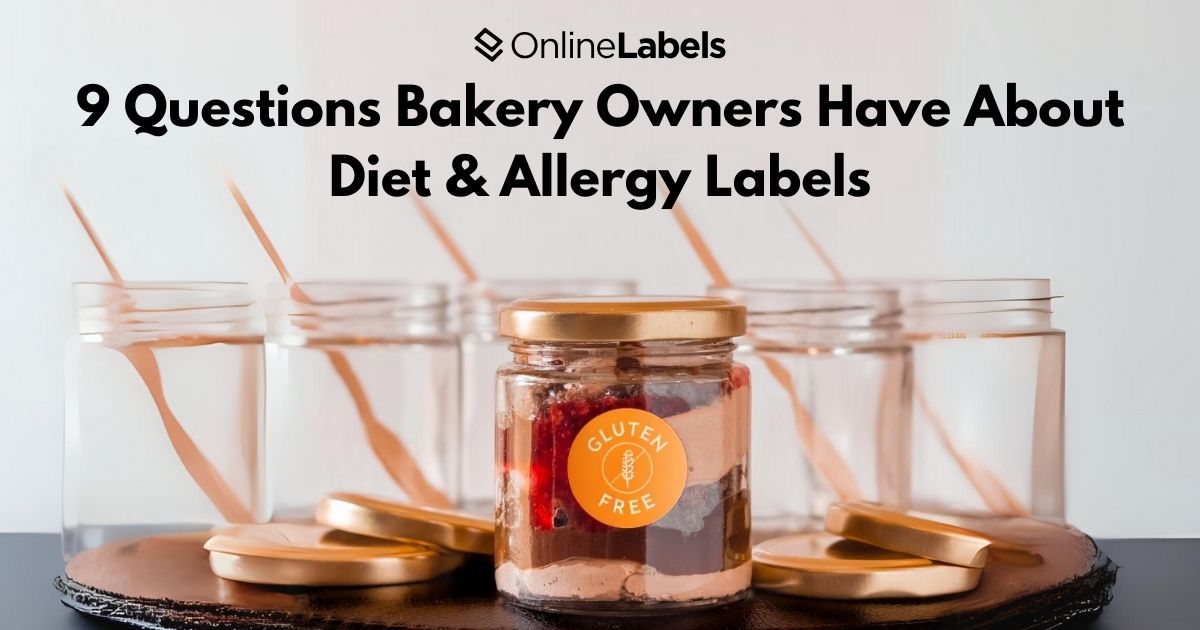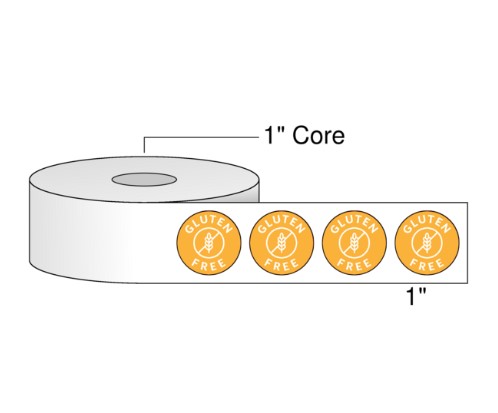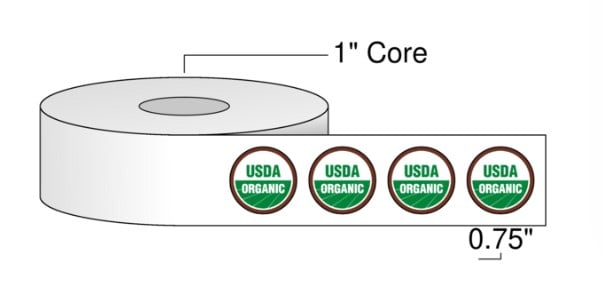9 Questions Bakery Owners Have About Diet & Allergy Labels

In this article, we'll answer the nine most common questions about using diet and allergy labels in bakeries. Adding alternative bread and pastries to your menu can be tricky, but knowing the labeling rules will keep your customers safe and ensure you comply with regulations.
To help, we've scoured the internet for the most frequently asked questions about diet and allergy labels. We've also included the answers and extra tips to keep you informed and protect your customers from food contamination.
1. How do I properly label a gluten-free product in my bakery?
Labeling a gluten-free product correctly ensures customer safety and compliance with regulations. Here's how you can adequately label a gluten-free product in your bakery:
- Understand the regulations: different countries have specific rules for gluten-free labeling. In the United States, the Food and Drug Association requires that products labeled as “gluten-free" contain less than 20 parts per million (ppm) of gluten.
- Use clear and accurate terminology: for your customers to understand that the products don't include gluten; there are two elements to pay attention to when choosing the labels to place in your products.
- Label placement in the package: ensure that the label is displayed on the front of the packaging so the back can provide detailed ingredient information and any allergy statements that apply.
2. What symbols or logos can indicate that my bakery products are gluten-free?
Use clear and recognizable symbols when labeling your bakery products as gluten-free. Two labels are used for products that don’t contain gluten: gluten-free and gluten warning labels.
Gluten-free
A gluten-free label indicates that a product does not contain gluten and is safe for individuals with gluten intolerance, celiac disease, or other health or dietary reasons. The product has been tested and confirmed to contain less than the gluten threshold.

This is an example of an easy-to-understand gluten-free label. It explains that the product does not contain gluten or has been in an environment without gluten. It also has a pictogram to illustrate the information for those who cannot read English.
3. How do I label my bakery products as vegan?
To tag your products, you must use the correct vegan labels to showcase that they are free from animal-derived products. Labels created for this product type typically contain a leaf and the word "Vegan" on the center, as approved by the Food and Drug Administration(FDA).

4. How do I display organic certifications on my products?
Displaying organic certifications on your product label is essential for conveying that your product meets organic standards. Apply the seal correctly on the front of the product, especially USDA organic labels, which must always be present.

5. What information is required to label a bakery product as organic?
To label a bakery product as organic, you must adhere to specific requirements set by organic certification bodies, such as the FDA and USDA in the United States. Ensure your product is certified by a USDA-accredited certifying agency, and put that label on your packaging. If the products contain organic ingredients, use the USDA Organic label; this will show that a product contains at least 95% organic ingredients.

6. What disclaimers should I include on my products to address potential cross-contamination?
Including disclaimers about potential cross-contamination on your product labels is essential to ensuring customer transparency and trust. Many customers with dietary allergies will look for specific food disclaimers before purchasing a product. For this reason, here are a few suggestions your business must have at the time of production.
- Factory disclaimer: ensure that your product contains a label that shows where the product was manufactured.
- Allergen-specific disclaimer: a diet and allery label must be included in the packaging if a product is created for a specific food allergy. This can consist of peanuts, fish, shellfish, soy, etc.
- Food warning disclaimers: these disclaimers inform consumers about potential risks or issues associated with a product.
7. How can I prove to customers that my gluten-free products are safe?
Proving to customers that your gluten-free products are safe involves including several certifications and labels. Here are a few ideas you can do to ensure that people know your products are gluten-free:
- Obtain an FDA certification for packaged goods: the FDA covers a regulation for packaged foods, including dietary supplements.
- Clear labeling: label your products gluten-free and include a statement about your gluten-free certification and testing practices.
- Include USDA labels: if your products are organic, include a USDA organic label on your packaging. FDA works alongside USDA, which is in charge of organizing the requirements.
- Ingredient disclosure: provide detailed ingredient lists so your clients can see the ingredients present and any potential hazards.
8. How do I keep up-to-date with labeling regulations?
There are a few methods to stay up-to-date with labeling regulations that are crucial for ensuring compliance and maintaining consumer trust. Here are some effective strategies to keep current with food labeling regulations:
- Check government and regulatory websites: the Food and Drug Administration (FDA) and the USDA websites have good updates on food labeling regulations.
- Subscribe to newsletters and alerts: subscribe to newsletters and email alerts from relevant regulatory agencies to receive industry publications and journals.
- Professional networks and industry groups: participate in professional networks and industry groups on social media platforms to stay informed about changes and best practices.
9. What should I do if a customer questions the dietary status of my product?
If a customer questions the dietary status of your product, it’s essential to respond promptly, transparently, and confidently. Here are steps you can take to address their concerns effectively:
- Describe certification and testing: mention any certifications your product has received from reputable organizations. Highlight the regular testing procedures to ensure compliance with gluten-free standards and explain the regulatory practices.
- Explain production practices: mention that the product is made in a dedicated facility. Describe the measures to prevent cross-contamination and explain how every element is labeled correctly.
Safeguarding Your Bakery with Diet and Allergy Labels
Properly labeling your bakery products with diet and allergy labels is crucial for protecting your customers and ensuring compliance with regulations. You can build trust and confidence in your brand by understanding the specific requirements for gluten-free, vegan, and organic products and using clear, recognizable labels. Staying informed about labeling regulations and being transparent with customers will keep them safe and help your bakery thrive in an increasingly health-conscious market.



